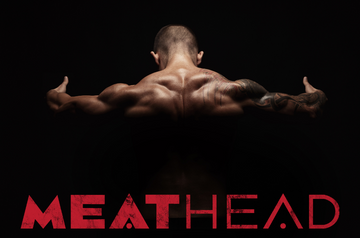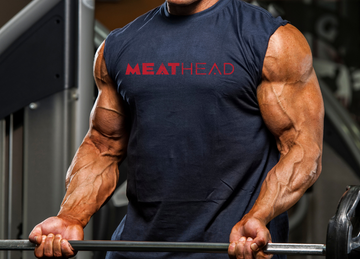In a world where strength, size, and masculinity often go hand in hand, there’s a shadowy force haunting the minds of countless male weightlifters and athletes. It’s not just the pressure to improve, to push harder, or to lift heavier. It’s an insatiable, often destructive obsession with size and strength—an addiction to the idea that no matter how much muscle is gained, it will never be enough. This phenomenon has a name: bigorexia, or muscle dysmorphia.
The Beast Within: What is Bigorexia?
Bigorexia is a subtype of body dysmorphic disorder (BDD), a mental health condition in which individuals have an obsessive focus on a perceived flaw in their appearance. For men with bigorexia, this flaw is their belief that they are not muscular or lean enough, despite often having physiques that many would consider impressive or even intimidating. These men relentlessly pursue the ideal body, often risking their physical and mental health in the process.
This isn’t just about striving for improvement or setting ambitious fitness goals. It’s about a pervasive sense of inadequacy—a belief that no matter how much progress is made, it will never satisfy the internal critic. The mirror becomes an enemy, reflecting back a distorted image that fuels anxiety, depression, and often leads to unhealthy behaviors.
The Vicious Cycle of "More"
Bigorexia doesn’t just manifest in the gym. It affects every aspect of life. Men suffering from this condition often spend excessive hours training, pushing their bodies beyond the limits in pursuit of the “perfect” physique. But the problem lies in the word “perfect”—for those with bigorexia, perfection is always just out of reach. The bar keeps moving higher, and the finish line is never visible.
This constant pressure to be bigger and stronger leads to dangerous behaviors, such as:
- Overtraining: Endless hours in the gym can result in chronic injuries, burnout, and in some cases, irreversible damage to muscles and joints.
- Disordered eating: To achieve their ideal physique, many men fall into extreme dieting, excessive bulking, or dangerous cutting practices. The need to be shredded but massive creates a difficult paradox.
- Supplement and steroid abuse: Desperation to get bigger faster can lead men down the path of performance-enhancing drugs like anabolic steroids, which come with a laundry list of potential side effects, including heart disease, liver damage, and psychological issues like aggression and mood swings.
This need for “more”—more size, more strength, more validation—creates a toxic cycle. The bigger they get, the smaller they feel. And so, they keep chasing an ideal that doesn’t exist.
The Psychological Toll
At its core, bigorexia is a mental health issue. The intense pressure to conform to unrealistic body standards leads to depression, anxiety, and feelings of worthlessness. For many men, their self-worth becomes directly tied to their physical appearance, creating a fragile sense of identity that can easily be shattered by even the slightest perceived flaw.
The gym, once a place of growth and strength, can become a prison. Relationships with family, friends, and romantic partners often suffer as those struggling with bigorexia become consumed with their body image and fitness routines. Social events may be skipped for fear of missing a workout, or because eating in public might throw off their carefully curated diet.
The Silent Struggle
One of the biggest challenges with bigorexia is that, unlike conditions like anorexia, which are more widely understood and discussed, bigorexia often flies under the radar. Men are conditioned to believe that wanting to be bigger is normal, even admirable. The image of the “ripped” man is glorified in media, social platforms, and sports culture, reinforcing the idea that bigger is always better.
As a result, many men suffering from bigorexia don’t seek help. They don’t recognize that their pursuit of size has crossed a dangerous line, and instead, they double down on their efforts, hoping that one more rep, one more meal, one more supplement will finally make them feel “enough.”
Breaking the Cycle
The road to overcoming bigorexia isn’t easy, but it begins with acknowledging the problem. Just as with other forms of body dysmorphia, treatment often requires a combination of therapy (particularly cognitive-behavioral therapy), support from loved ones, and in some cases, medical intervention.
For athletes and lifters battling bigorexia, it’s crucial to reframe the way they view fitness and body image. Strength and size aren’t the only markers of success. Mental health, overall well-being, and balance in life are equally, if not more, important. It’s about shifting the focus from always being “bigger” to being healthier, both mentally and physically.
A Call to Change the Culture
While bigorexia is a deeply personal struggle, it’s also a reflection of the broader culture surrounding fitness and masculinity. As a community, we need to challenge the glorification of unattainable physiques and redefine what it means to be strong. Strength isn’t just about muscle mass or the numbers on a bench press—it’s about resilience, balance, and self-acceptance.
For anyone reading this who feels they’re never big or strong enough, remember that true power comes from recognizing your worth beyond the gym. The path to a healthier body and mind is not paved with endless size, but with balance, self-respect, and learning to embrace the strength you already have.
It’s time to let go of the idea that “more” is always better, and start embracing the concept that you are enough.
For more tips, products, and gear check out www.Meatheadsupplements.com





